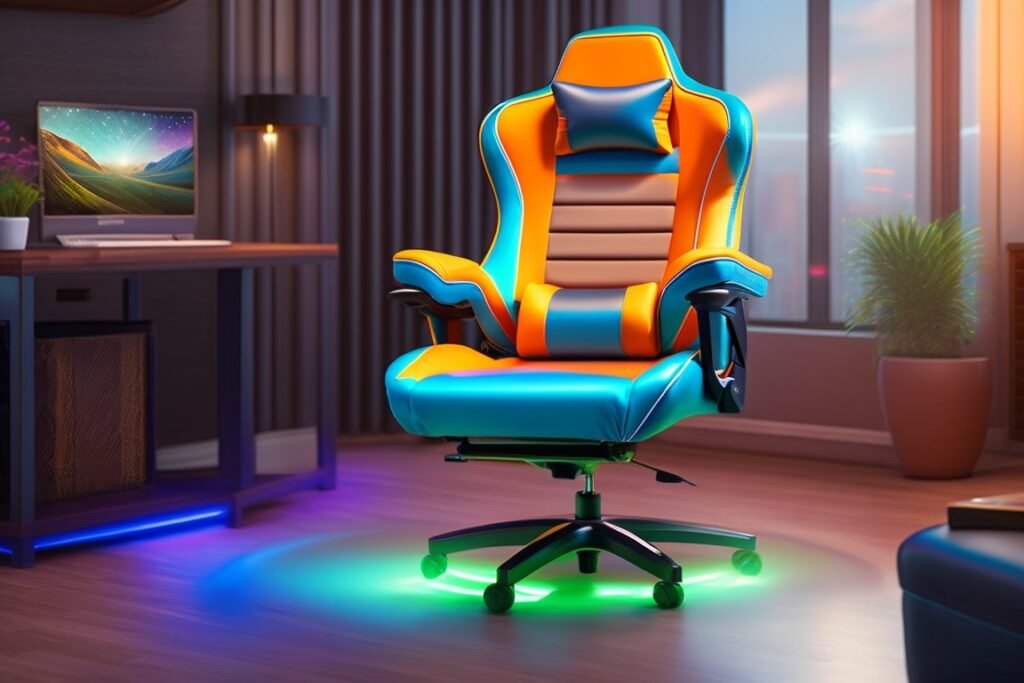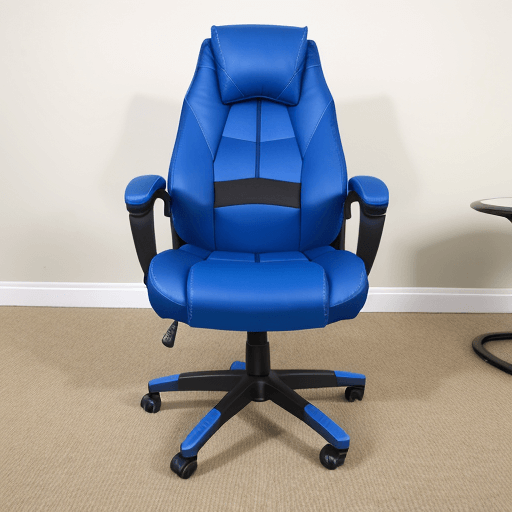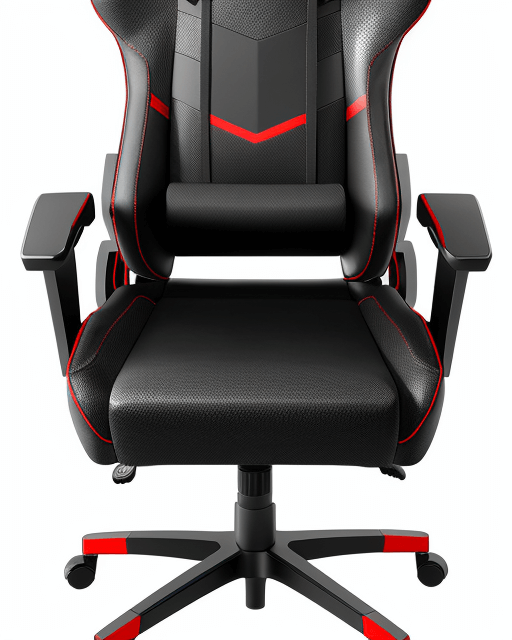Ergonomic desk setups are an essential tool for better posture and physical well-being. It is important to understand the benefits of incorporating ergonomics into a workspace, from improved productivity to decreased risk of injury.

This article will discuss how one may go about achieving this goal through understanding the proper ergonomic setup and equipment necessary for success.
Ergonomic workspaces provide individuals with the opportunity to work in comfort while avoiding potential risks associated with poor posture or incorrectly arranged furniture. Properly configured desks can reduce fatigue, improve concentration, increase efficiency, and even enhance overall health by allowing users to remain comfortable over long periods of time.
By learning more about these advantages, it is possible for any individual to gain mastery over their own ergonomic desk setup and lead a healthier lifestyle.
Introduction To Ergonomics
Ergonomics is the study of how people interact with their environment and tools in order to maximize efficiency, comfort, and safety.
It’s estimated that nearly 1 million U.S workers suffer from musculoskeletal disorders (MSDs) related to work each year, costing employers billions of dollars annually in medical expenses and lost productivity.
As an ergonomics consultant, it’s my role to help organizations create a safe workplace for employees by providing ergonomic basics such as desk setups that promote posture health while reducing risks associated with MSDs.
The goal when designing an ergonomic workspace is to make sure all components are properly adjusted to fit the user’s body type and needs.
This includes ensuring desks are at a comfortable height so users don’t have to lean forward or hunch over while working; chairs should be adjustable to allow for proper lumbar support; keyboards should be placed at elbow level for optimal typing position; computer monitors should also be placed at eye-level above the keyboard; and finally, mouse placement should promote wrist neutrality when using it.
These basic principles form the foundation of creating an effective office space which can reduce fatigue, improve concentration levels, and increase overall job satisfaction among workers – leading to higher morale within an organization as well as improved performance overall.
Moving on from here we’ll take a closer look into ergonomic posture and its benefits.
Ergonomic Posture And Its Benefits
Ergonomic posture has numerous benefits for office workers. By the use of ergonomically designed furniture, users can achieve a comfortable and supportive sitting posture that reduces physical strain on their bodies. Ergonomic furniture is an investment in health as it helps to ensure comfort throughout extended periods of sitting at a desk or workstation.
Back support is one of the key elements of achieving proper ergonomic posture. An adjustable chair with ample lumbar cushioning promotes good back alignment while preventing lower-back pain and fatigue from prolonged sitting. The height should be adjusted so that your feet are firmly planted on the floor, creating stability while allowing your thighs to remain parallel with the floor.
Moreover, armrests should provide support without compromising mobility when reaching for items around the desk area. Positioning is also vital for optimizing ergonomic posture. Your monitor should be placed directly in front of you about eighteen inches away from your body, and slightly below eye level to reduce neck strain.
Furthermore, keyboards should be set up low enough such that elbows maintain ninety degree angles while typing. All these features combined help create an optimal environment that encourages healthy movement and minimal stress on muscles and joints over time.
The Right Office Chair
Have you ever felt discomfort after sitting in a chair for an extended period of time? It can be easy to overlook how important having the right office chair is when it comes to ergonomics.
A great chair should have adjustable features, provide comfort and support, and use durable materials that will last through frequent use. Here are some key points to consider when selecting one:
- Adjustable seat height – this feature allows users to customize their chairs so that they can sit at a comfortable level while typing or using other tools on the desk.
- Lumbar support – lumbar support helps reduce back pain by providing proper alignment of the spine and keeping pressure off sensitive areas.
- Comfortable padding – choose a material such as foam that has both cushioning and bounce-back capabilities for maximum comfort during long hours of work.
- Armrests – armrests help prevent strain from leaning too far forward or backward while working at a computer, which could lead to neck and shoulder fatigue over time.
- Durable materials – look for high quality fabrics, mesh, or leather that offer durability and breathability for longer lasting comfort throughout your day.
It’s crucial to find an office chair with these features in order to maximize its ergonomic benefits. The next step is making sure it adjusts properly for optimal performance in any workspace environment.
Adjustable Desks
Adjustable desks make it possible to customize the workspace for individual user needs. They are designed with ergonomics in mind, allowing employees to adjust the height of their desk and arms based on their own physiology. This helps reduce neck strain when sitting at a computer all day or standing while working. Height adjustment is an important factor in optimizing comfort during work hours; adjustable arms can further improve posture by providing additional support for upper body movements.
Monitor placement is also key when creating an ergonomic setup. A monitor that is too high or low can cause eye fatigue and back pain due to incorrect viewing angle and distance from the screen. The ideal position should be slightly below eye level, directly facing the worker without being tilted away from them.
Keyboard placement should be adjusted next, ensuring that the wrists remain straight while typing and no arm reaching is necessary. Elevating the keyboard if needed will help keep elbows close to the sides of the body rather than outstretched towards the monitor which causes shoulder tension over time.
The right equipment is essential for achieving maximum comfort and productivity at any workplace, but proper positioning plays just as big a role in ergonomics success. By taking into consideration how each piece of furniture affects each employee’s physicality, employers can take steps to ensure safety and satisfaction throughout every shift. As such, careful attention must be paid to monitor and keyboard placement when setting up an ergonomic workstation.
Monitor And Keyboard Placement
Research conducted by the United States Department of Labor has found that approximately 50% of all office workers experience pain in their upper body and neck caused by poor ergonomics. It is essential to ensure proper monitor and keyboard placement in order to maximize comfort and prevent discomfort or injury.
The following considerations should be taken into account when setting up an ergonomic workstation:
- Monitor Height: The top of the screen should be at eye level, allowing for a straight line from your eyes to the top third of the monitor. This will help reduce strain on the neck muscles as well as avoid glare from windows and overhead lights.
- Keyboard Angle: An adjustable keyboard tray can help create an angle between 30-45 degrees with your elbows relaxed next to your sides. This allows for optimal reach while typing so you don’t have to extend your wrists too far outwards.
- Additional Accessories: Adding footrests, wrist rests, document holders and other accessories can make a difference in reducing fatigue or tension throughout long hours sitting at a desk without having to adjust posture frequently.
Ergonomic desks are designed with these principles in mind, allowing users to customize their setup according to individual needs and preferences. With thoughtful consideration about each component, it is possible to create a comfortable workspace environment where productivity thrives.
Footrests And Wrist Rests
The correct placement of the monitor and keyboard is essential for ergonomic desk setups. Now, it is important to consider other ergonomic equipment that can be used to increase comfort levels while working at a computer station.
Footrests are an ideal solution for those in need of improved posture correction when seated at their workstation. These supports provide relief to users who experience discomfort in their feet or lower legs due to prolonged sitting positions. Additionally, standing desks may also help reduce physical stress by allowing users to switch between sitting and standing throughout the day; this helps promote healthy posture habits as well as increasing blood flow and circulation throughout the body.

Wrist rests are another type of ergonomic device available that can help alleviate strain from extended use of keyboards or mice. They come in various shapes and sizes so they can fit any user’s individual needs, making them especially beneficial for writers and typists who require precision input accuracy during long stretches of work time. Wrist rests also make great additions to laptop stations where external support surfaces are not available.
By equipping your workspace with footrests, standing desks, and wrist rests, you will have taken a major step towards creating an ergonomically sound workplace environment. These devices should prove invaluable in helping maintain comfortable postures when working on computers for extended periods of time, thus reducing potential risks associated with repetitive motion injuries such as carpal tunnel syndrome and back pain.
Other Ergonomic Equipment
Ergonomic accessories and posture aids can help individuals maintain a comfortable, healthy workspace.
To illustrate this point, consider the case of an office worker who experiences chronic back pain from sitting for long periods at their desk. By investing in ergonomic equipment such as lumbar support or adjustable footrests, they are able to reduce stress on their spine and neck muscles while also improving circulation throughout their lower body. This helps them remain productive without sacrificing comfort levels.
Furthermore, there is a wide range of additional ergonomics accessories available today that offer various benefits when it comes to optimizing your workstation setup. For example, wrist rests provide cushioning for mouse users to prevent strain during repetitive tasks; monitor stands let you adjust the screen height so that your eyes remain level with the top of the monitor; and adjustable chairs allow workers to customize seating positions for optimal positioning relative to other components like keyboards and desks.
In addition, some employers may even go further by providing employees with standing desks which encourage more active postures than traditional seated setups. Studies have shown that these types of workspaces can improve focus while reducing fatigue over extended periods of usage compared to standard alternatives.
As such, many organizations now recognize the value of equipping their staff with ergonomically designed furniture pieces as part of comprehensive workplace wellness programs aimed at boosting employee morale and productivity levels alike.
With these insights in mind, we will now discuss overall ergonomic setup tips for keeping oneself comfortable and healthy at any type of workplace environment.
Overall Ergonomic Setup Tips
Establishing an ergonomic workstation is essential for a comfortable and productive workspace. To ensure that the desk setup is as user friendly as possible, it’s important to consider not only the chair but also the lighting and accessories.
Ergonomic lighting should be bright enough to illuminate all areas of the desk while avoiding glare on computer screens or other reflective surfaces which can cause eye fatigue and strain. The ideal light source should have adjustable brightness levels, dimmers, or filters depending on task requirements.
It may also be helpful to introduce natural light into the space with windows if practical. Desk accessories such as wrist rests, laptop stands, document holders, monitor risers, footrests, and keyboard trays are all designed to help reduce stress in different parts of body by providing support and promoting optimal posture.
By investing time and resources into making sure these items are properly incorporated into an ergonomic workplace users can benefit from improved comfort and greater productivity over time.
Frequently Asked Questions
How Much Does An Ergonomic Desk Setup Typically Cost?
The modern ergonomic desk setup is a combination of adjustable-height desks, comfortable chairs and strategically placed accessories that can help improve posture.
But the cost of these items can vary dramatically depending on how many features you need or want to include in your workstation.
Prices for an ergonomic chair alone range from $150-$800, while adjustable height desks start at around $400 and go up significantly.
With such a wide selection available, creating the perfect ergonomic workspace doesn’t have to be expensive – but it does require careful consideration before making any purchase decisions.
Are There Any Health Risks Associated With Using An Ergonomic Desk Setup?
Ergonomic desk setups can be a great way to prevent stress injuries, improve posture and reduce fatigue.
However, if the setup is not properly configured for an individual’s body type or they do not take preventative measures such as making frequent posture adjustments throughout the day there are potential health risks associated with using this type of workstation.
These include back pain, neck strain, carpal tunnel syndrome, tendonitis and eye strain due to improper viewing angles.
To ensure optimal ergonomics it is important to make sure that all components of the desk setup are correctly adjusted based on an individual’s height and physical requirements in order to avoid any potential negative consequences.
Can I Use An Ergonomic Desk Setup In A Home Office?
The use of an ergonomic desk setup in a home office is perfectly acceptable, and can even be beneficial.
Ergonomically designed chairs provide support for the user’s back while adjustable desks allow users to customize their workspace to suit their individual needs.
When using these items correctly, workers may experience improved productivity levels as well as comfort while sitting at the desk.
To reap the full benefits of an ergonomic desk setup, it is important that users spend time adjusting both their chair and workstation height to best meet their own specific requirements.
Are There Any Ergonomic Desk Setup Options For People With Limited Space?
Ergonomic desk setups are no longer limited to spacious offices, as there are now compact solutions which can provide adjustable heights and comfort for those with limited space.
Whether you’re working from a cramped dorm room or an apartment studio, ergonomics consultants have developed numerous options that allow individuals to customize their workspace in order to avoid discomfort during long hours of work.
From height-adjustable desks to articulating keyboard trays, the possibilities are endless when it comes to choosing an ergonomic setup that works best within your specific circumstances.
Is It Necessary To Use All The Components Of An Ergonomic Desk Setup?
When it comes to ergonomics basics and posture improvement, the use of all components of an ergonomic desk setup is not necessarily a requirement.
Depending on individual body type and preferences, certain elements may need to be adjusted or even removed altogether for optimal comfort.
A trained ergonomics consultant can provide guidance in identifying which components should stay and go in order to create an effective workspace that meets your needs.

Conclusion
The right ergonomic desk setup can revolutionize the way one works, creating an environment of comfort and productivity. It is a tangible representation of taking care of oneself that will pay dividends in terms of improved health and increased job satisfaction.
The cost of such a setup may seem daunting at first; however, when one considers how much time they spend working each day, it quickly becomes apparent how important it is to invest in their own wellbeing.
It’s easy to become overwhelmed by all the options available for an ergonomic desk setup—but with the help of professionals, individuals can find something ideal for their specific needs while avoiding any potential risks associated with incorrect use.
In this way, an ergonomic desk setup symbolizes not only physical well-being but also mental clarity and focus: essential components for achieving success.

Sha Neumeister, the visionary behind SomosVisibl.com, is a connoisseur of gaming chairs that prioritize both style and comfort. With an unparalleled understanding of ergonomics and a passion for enhancing the gaming experience, Sha curates a collection of gaming chairs that offer impeccable support and aesthetic appeal. Elevate your gaming setup with Sha’s handpicked selection of gaming chairs, designed to keep you comfortable and immersed in your virtual adventures.








